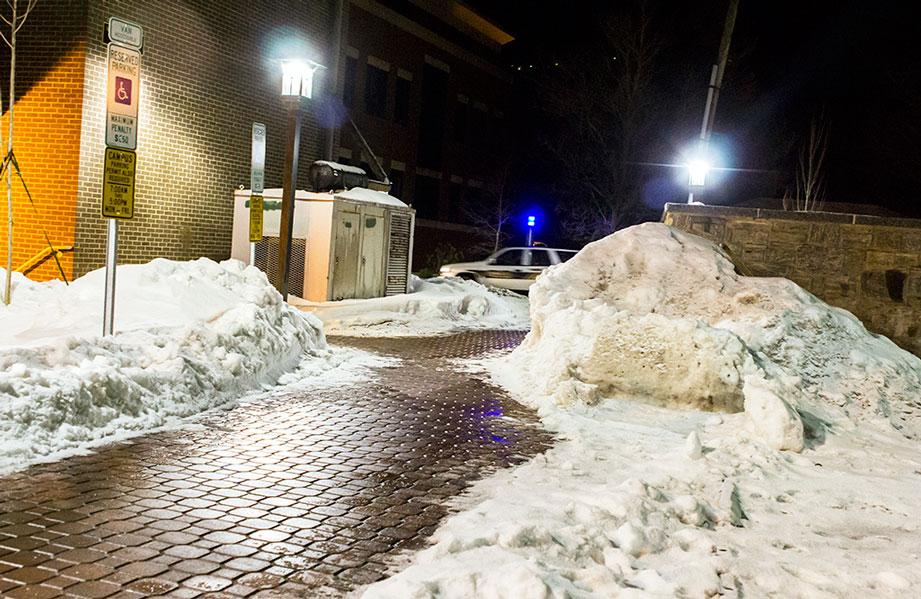Winter preparation and planning resources for Appalachian State University have increased spending after this winter’s unusually low temperatures and high snow accumulation, and the Town of Boone budget may also be affected.

Appalachian’s Physical Plant Director Mike O’Connor said that the university spends an average of $100,000 on salt and $35,000 on fuel and equipment repairs annually. They also spend about $13 million on utilities for the entire year, including higher monthly costs in the winter due to lower temperatures.
Due to high salt usage and utility costs, the university is about $250,000 over average yearly budget for the winter in these areas, O’Connor said.
Appalachian Physical Plant’s entire staff drops their normal duties in the event of high snow accumulation to plow and salt roads and sidewalks throughout campus. They will continue to work to get through the winter.
“Our snow plow teams start plowing as soon as the snow is deep enough to plow,” O’Connor said. “We work 24-7 until we get things cleaned up. We don’t like falling behind since deep snow is harder to push.”
O’Connor said the university was adequately prepared and will not run out of resources.
“We ensure we have enough bulk salt and bucket salt to cover the predicted winter,” O’Connor said. “We keep tabs on the inventory and if we start running low, we reorder more salt.”
Although this winter may be an extreme one, it is certainly not the most costly for the university.
“The winter of 2009-10 was much, much worse,” O’Connor said. “We spent over $200,000 on salt and $20,000 on contractor support. We had snow on the ground from October through May.”
Eric Gustaveson, the interim director of Public Works for the the Town of Boone, said the town has not yet gone over budget or run out of resources for the year.
“We’re not to the critical state of having to request more funding, but that could change depending on the rest of the winter,” Gustaveson said.
Gustaveson said Boone has used a little more than 1,000 tons of salt to date for the 2013-14 winter and still has about 500 tons left for the remainder of the season.
“It’s not unusual in the past that we’ll go through all our salt and we have to ask for more money in the budget, and they understand that it’s needed for public safety,” Gustaveson said.
“We’ve still got 45 days to go. There’s still a lot of winter to come.”
January 2014 was the coldest January since the late 1970s in Western North Carolina, according to raysweather.com. The average daily low temperature was 11.74 degrees fahrenheit in January 2014, the lowest average on record for the Town of Boone.
The coldest temperature for the month was 8 degrees below zero, while the lowest ever recorded was 24 degrees below zero in 1985.
Blue Ridge Electric, the primary power provider to Boone and the university, also broke a record in January, said Director of Public Relation Renee Whitener.
Blue Ridge Electric’s megawatt usage peaked to 383, higher than ever before Jan. 7, 12 percent above their previous peak of 340 megawatts in 2009.
To make up for the unusually high cost of heating during the winter months, Blue Ridge Electric is offering a temporary rate reduction during the months of February, March and April for the residents of Boone, Whitener said.
Whitener said their average member uses 1,000 kilowatts of energy a month and will see a $9 reduction, which will save the company as a whole more than $1 million monthly.
Story: Laney Ruckstuhl, Intern News Reporter
Photo: Paul Heckert, Photo Editor
